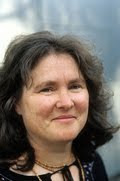 |
| The Last Men by Iago Corazza. (2008,White Star Publishers) |
This book is breath-taking! I am known to take pretty average photographs so when I come across a coffee-table book of such exquisite photographic portraiture I am in awe.
Corazza and his colleagues travelled to Papua New Guinea and Irian Jaya and attended sing-sings in the highlands. There they took hundreds of photographs of the myriad of costumes and finery on display. Costumes displayed everything from moss and shells to cassowary beaks, boar tusks, bird-of-paradise feathers, leaves, bilums and penis gourds.
The detail in the pictures is so fine that you can imagine these proud and scary warriors right before you, complete with sweat and face paints.
The book's full title is
The last Men: Journey Among the Tribes of New Guinea but it seems to also be published as
Farewell to the Last Man: Irian Jaya and Papua New Guinea. No matter what the title, it is just magnificent!
Please note that the link above takes you to Corazza's website which is written in Italian but there are some super photographs at the introduction which give you a taste of his amazing work.




